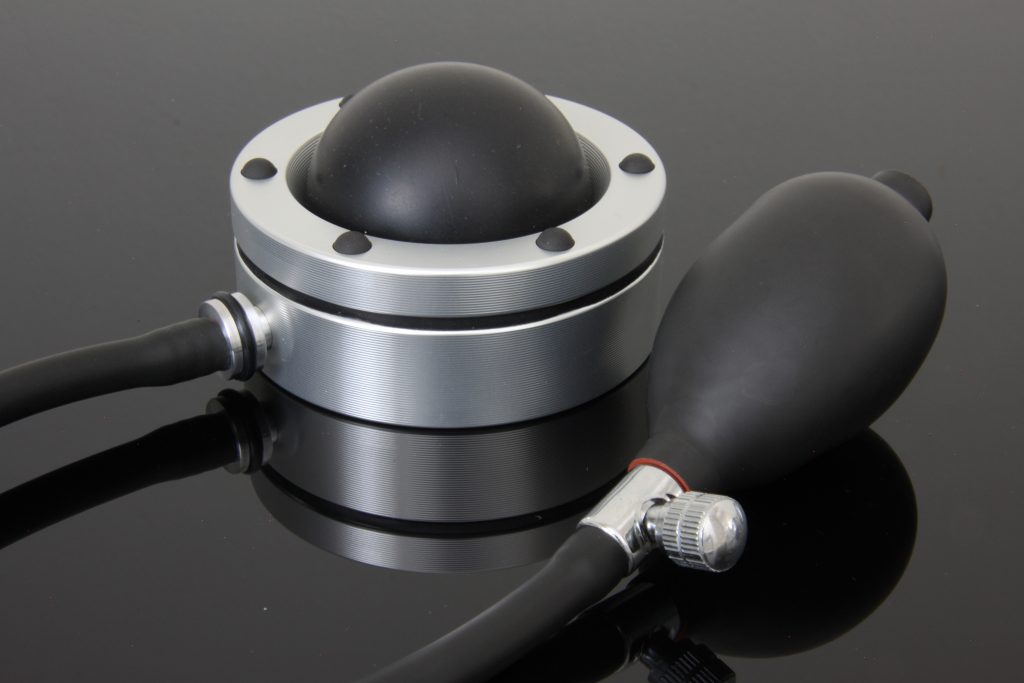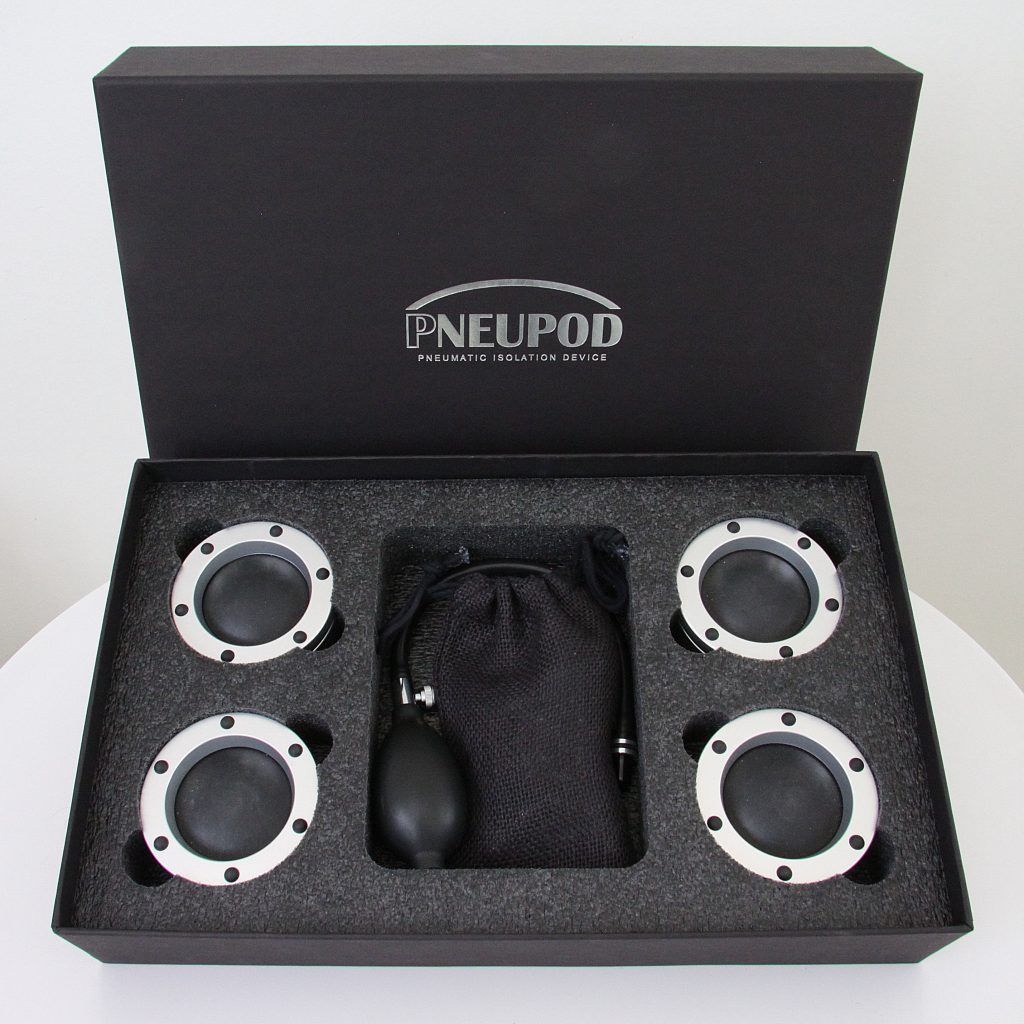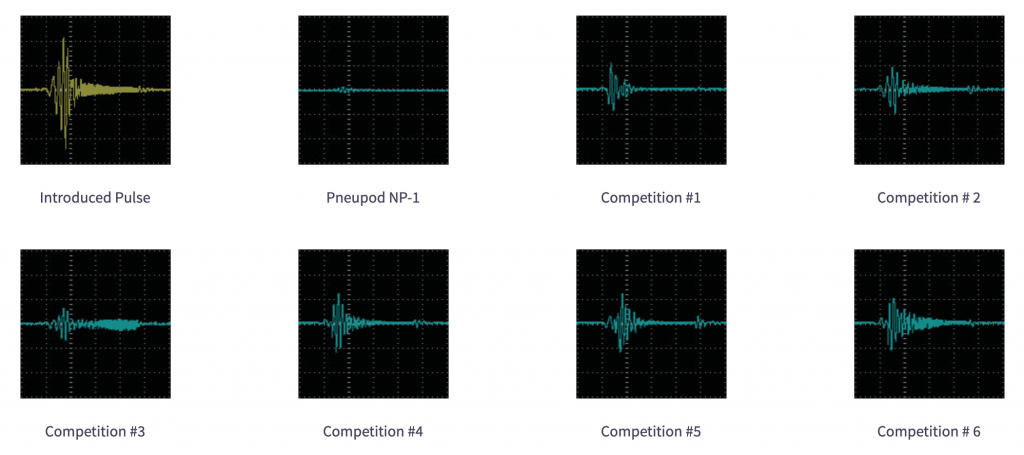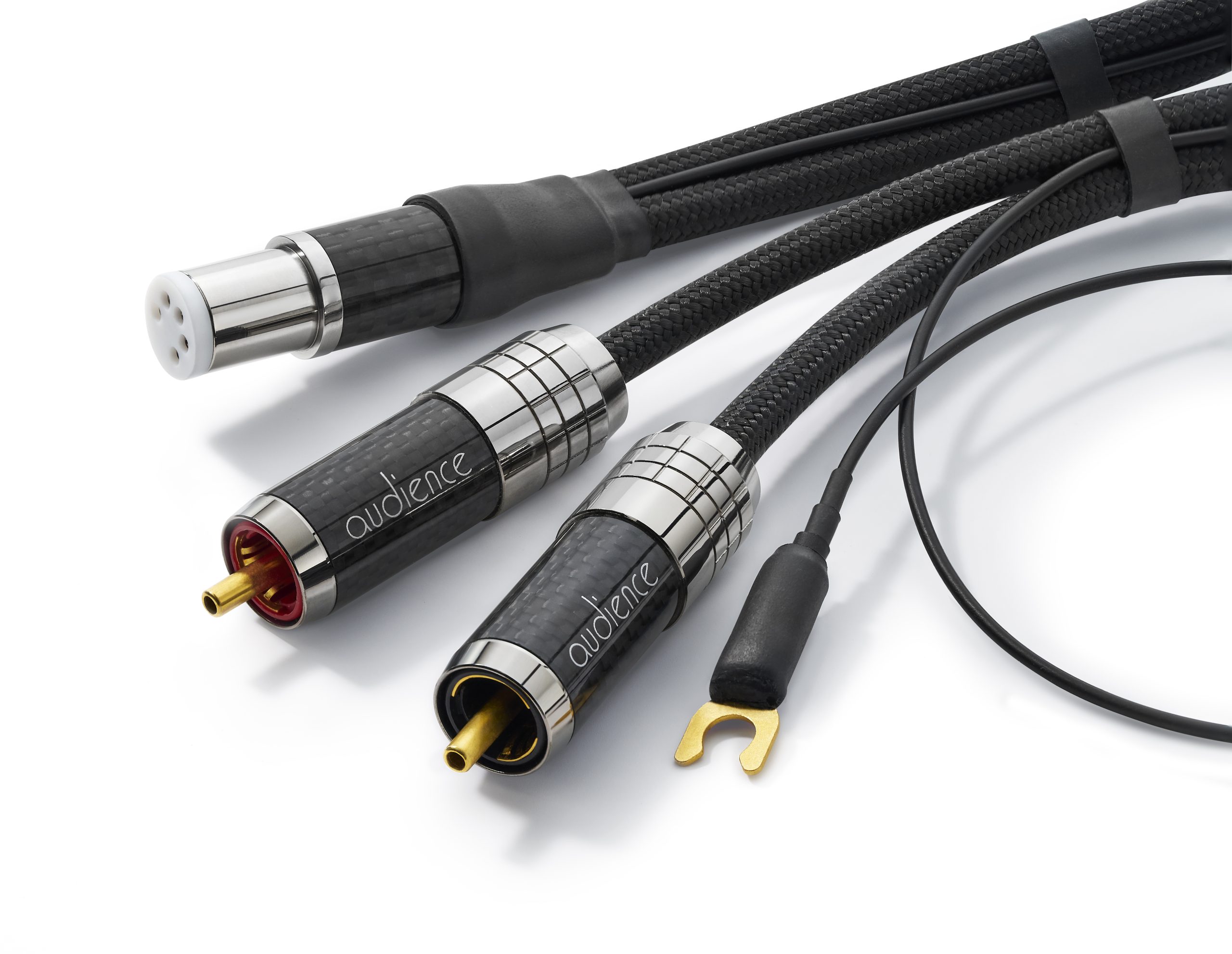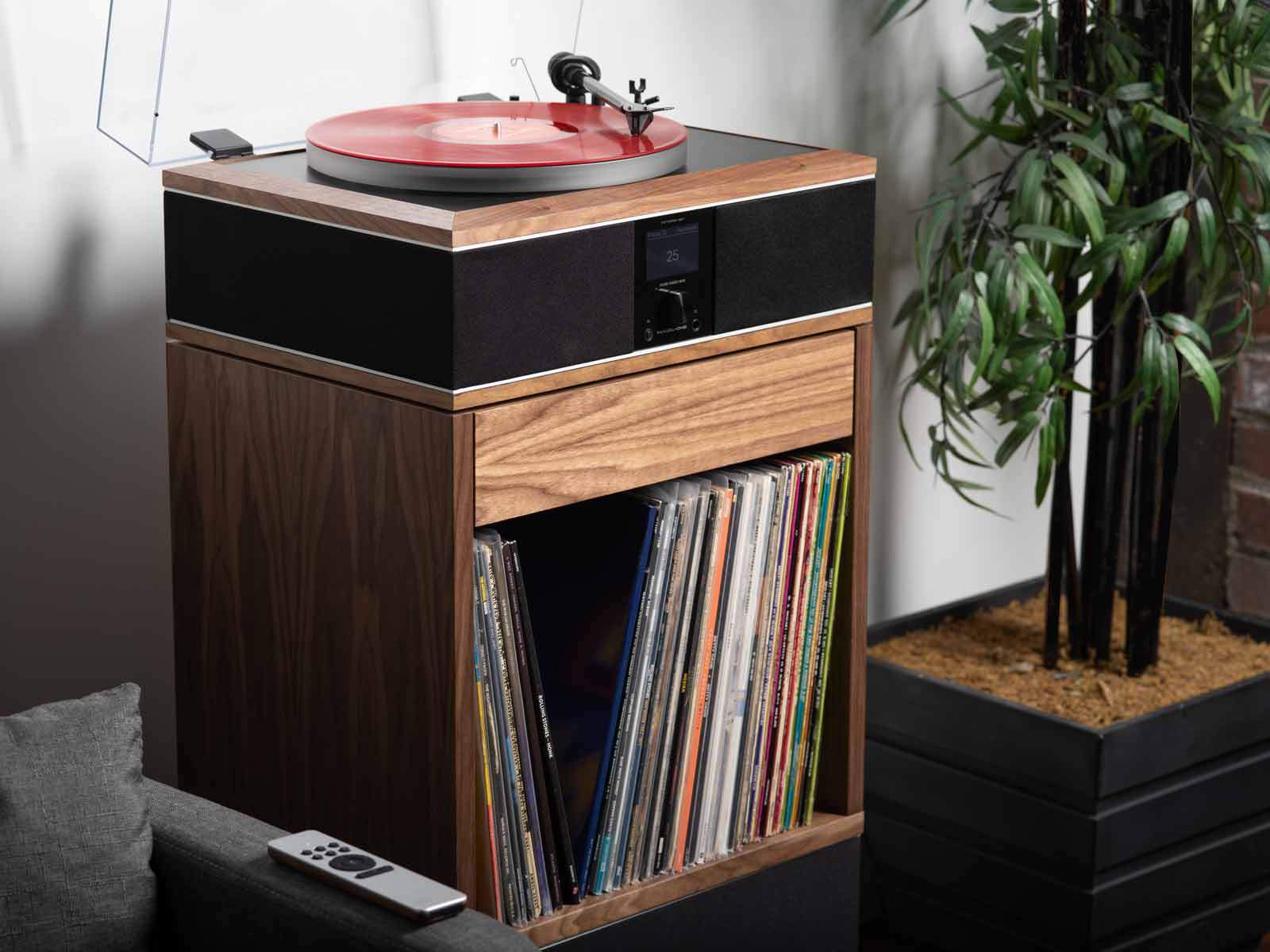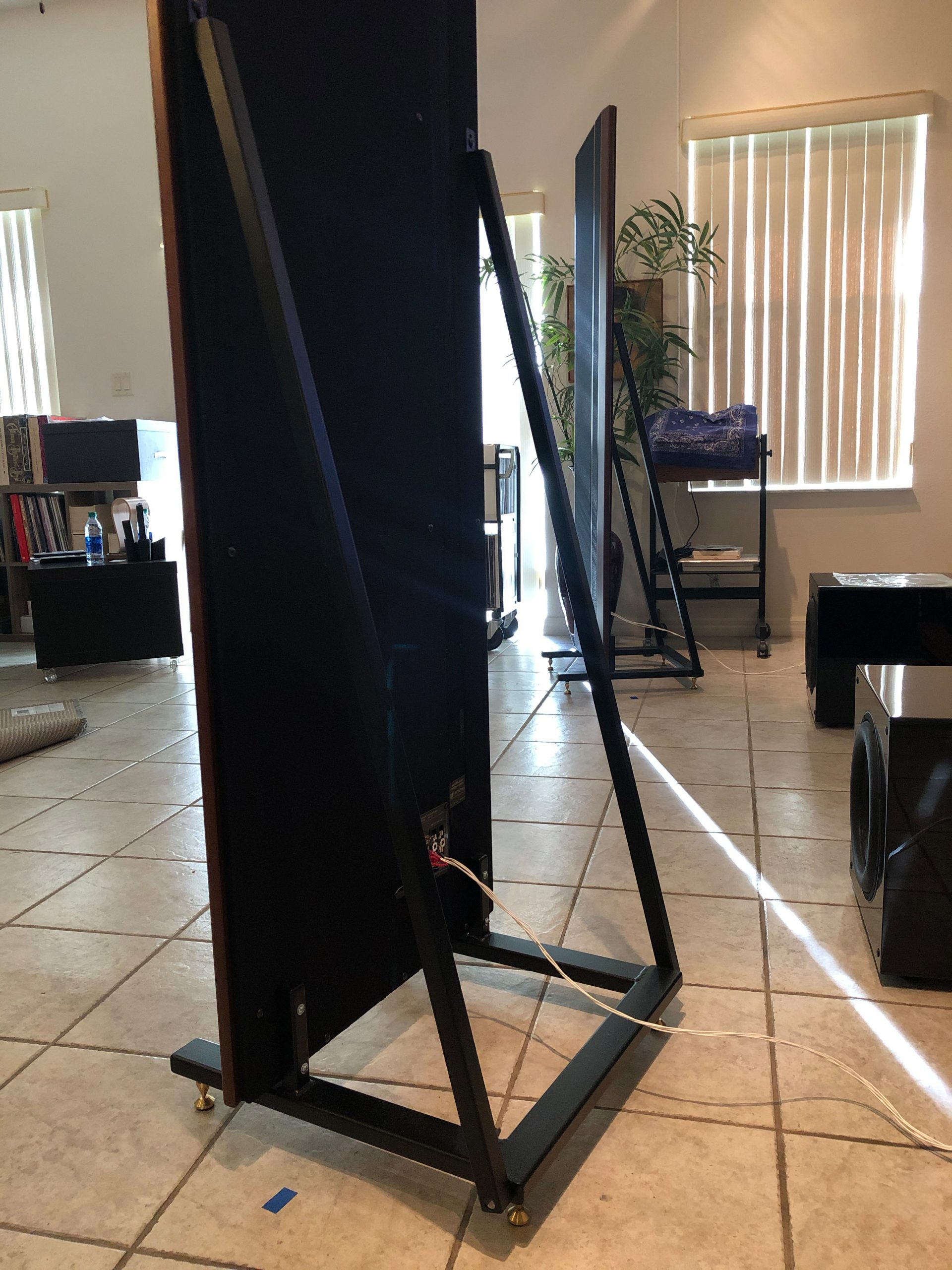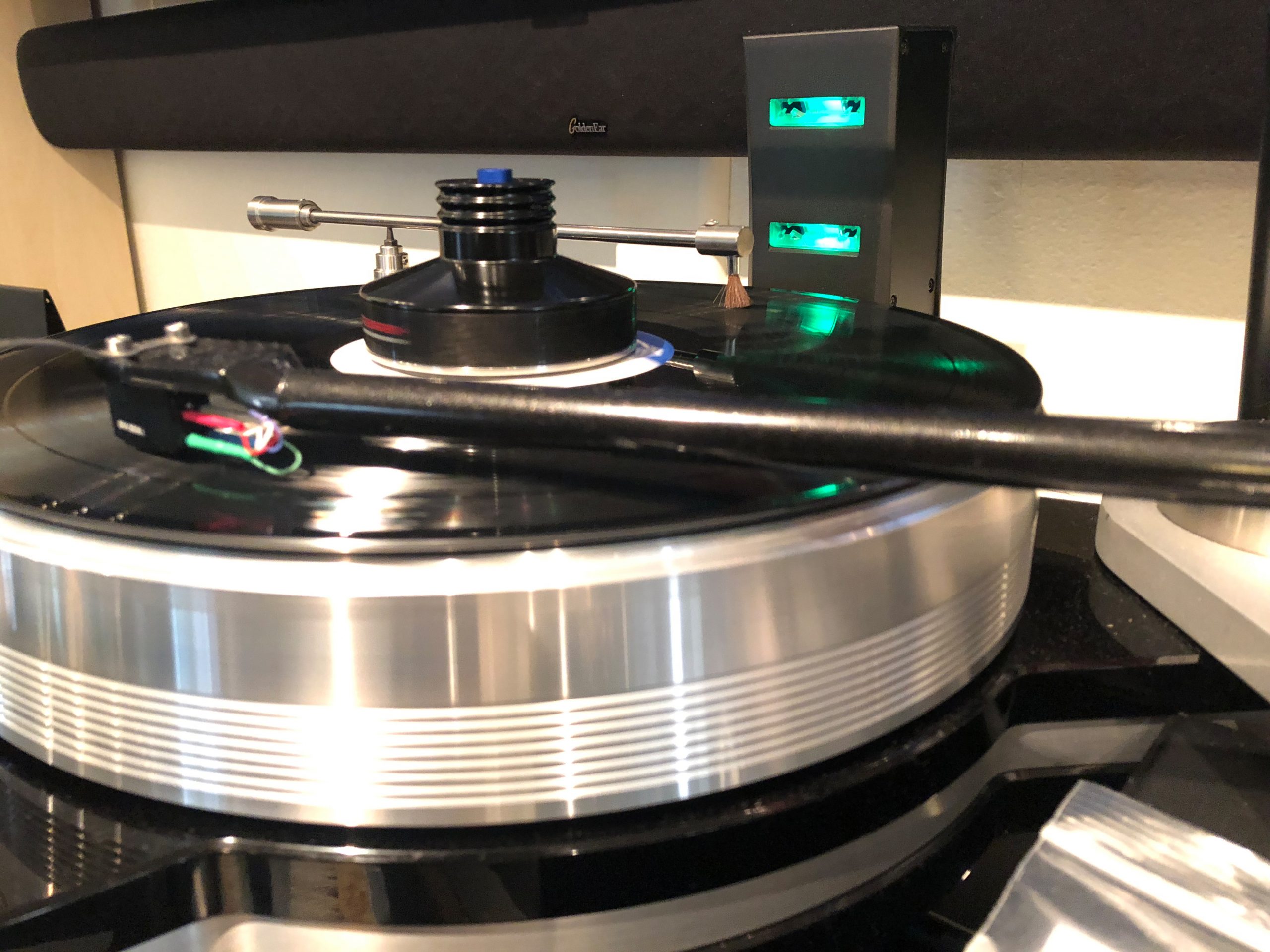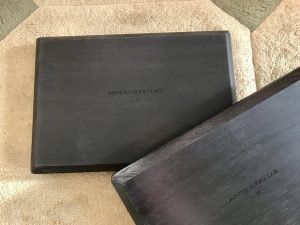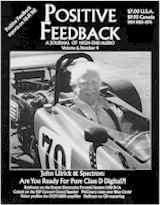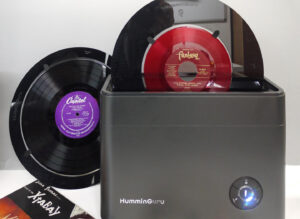When James Brown urged everyone to "get on the good foot!" he could have just as easily been singing about Pneuance Audio's new Pneupod Pneumatic Isolation Feet, they've sure got me singing their praises! Isolating components from unwanted vibrations and the resonance they cause with high quality isolation footers can, and does result in very real and dramatic sonic improvements. The kind of improvements you may not realize you need until you hear them for yourself in your system. This was very much my experience. The trick is finding footers that A) actually do what they claim to do, i.e. real science and results not voodoo and B) do so without costing you a king's ransom. Pneuance Audio's Pneupod Pneumatic Isolation Feet easily check both of these boxes.
After learning about Pneuance Audio's Pneupod Pneumatic Isolation Devices via AXPONA coverage, my interest was keenly piqued about these made in America footers. Imagine your components floating on air, that's exactly what you get with Pneuance's air bladder based isolation technology. They demo extremely well, but would they have as dramatic an impact in my system, with my rack, in my room, and on my floor? My system resides on a concrete slab covered with tile, and sits on a sturdy, if not technologically over the moon Timber Nation maple rack with three 20"W x 48"L x 34"H 2" thick shelves and four 3" inch thick posts each terminating with a brass cone.
I'd long been pondering replacing the stock brass cones under the Timber Nation 3" inch thick maple isolation platform I use to support my VPI Avenger Reference turntable. Not for any reason other than, like you, I'm an audiophile tweaker. Given that I'm not operating on a suspension floor, notorious for unwanted vibrational interaction, I was skeptical but curious what if any improvements reduced resonance from upgrading my isolation table's footers would yield. The VPI's reference footers are fabulous as well as stunning to look at, so I had no desire to replace those. However, tapping my finger on the top shelf of my rack while a record was playing, it was patently obvious that I was lacking in the isolation department. Each thump, thump, thump of my finger could be clearly heard though my Goldenear Triton Reference speakers via the stylus and tonearm, not good.
Not that I sit around tapping my finger on my rack during playback, but this interaction did give me pause. How much unwanted and unnoticed resonance was there happening between my speakers, each placed approximately five feet apart left and right, and my turntable? How much was this lack of isolation and the resulting resonance I was hearing as I tapped away potentially taking me further away from the music? In other words maybe there were other resonance issues afoot which I was blithely unaware of. If this hobby has taught me anything it's that often you don't realize you have a problem until you fix it. You don't know what you don't know.
I reached out to Pneuance who agreed to send me a set of four NP-2 Pneupods to review. Pneupods are available in two models, the NP-1 rated at 20 lbs per foot, and the NP-2 rated at 40 lbs per foot. With the VPI Avenger, HRX Clamp, Periphery Ring, and Rim Drive motor weighing in at a hefty 80 lbs, plus the weight of my maple isolation platform, I opted for the NP-2 to support the load and provide a healthy safety margin.
Anything air based used to support delicate, pricey components raises a host of concerns for me regarding reliability, so I was happy to learn that Pneuance has designed in a series of redundancies throughout the Pneupod to assure robust, burst free, and leak free operation for years to come. Each Pneupod NP-2 air bladder (or diaphragm using Pneuance parlance) is comprised of two layers of 1/8th inch thick proprietary rubber formulated expressly to eliminate air permeability and porousness. The air intake valve located on the side of each Pneupod and used to inflate, deflate, and generally adjust foot height, is another area of thoughtful innovation. Pneuance has created a zero air loss connection/disconnection point, no small feat. No pressure is lost when connecting or disconnecting the bulb or piston pumps used to inflate or deflate the NP-1 or NP-2 respectively.
Pneupod's are three inches in diameter, milled from a solid block of aluminum which houses their inflatable rubber air bladder. On the bottom, a ring of 6 rubber bumpers assures scratch free use. Pneupod's scored brushed aluminum finish, jet black air bladders, and o-ring design flourishes make them not only functional, but striking to look at, and a perfect compliment to VPI's silver and black aesthetic. With a modest inflated height of only one and a half inches, Pneupods fit easily into existing spaces without modification, an important consideration when adding after market feet.
Ever the skeptic, there was no way I was going to trust these new kids on the block feet with my precious Avenger before first conducting a rigorous stress test. When they arrived, beautifully packaged I might add, I inflated them. Set up was a snap, more on that later, put the four Pneupod NP-2s under my isolation platform, sans the turntable, and used two 40 lb dumbbells from my home gym to approximate the weight they would eventually be tasked with supporting. Then I let that arrangement sit tight for 24 hours. The Pneupods passed my stress test with flying colors, they didn't budge, there was no change in height, no change in level, no bursts, no nothing. Just rock solid performance.
Now I was ready to trust the Pneupods with my Avenger! Set up couldn't be simpler. Pneuance provides a hand held guide used to uniformly inflate each air bladder to the proper height. Once this is done, Pneupods can be attached to components or platforms in a bubble down orientation using their 1/4 20 receptacle and included hardware, or floated as I did. If your component doesn't have leveling feet you can use the Pneupods to adjust for height or uneven weight loads by precisely inflating or deflating each Pneupod as needed. Happily the Avenger has 3 leveling tripod feet, so I was able to set and forget the Pneupods and level the table with those.
Once the turntable was back in place, reconnected, and resting securely on a cloud of Pneupod air bubbles it was time for…you guessed it, the finger tap test! Would these new air bladder footers make a difference, and if so, how much? Tap, tap, tap…nothing, no sound at all other than my finger contacting the top shelf of my rack! There was now zero interaction between my rack and my turntable, finger taps were no longer amplified through the turntable and into the speakers. Impressive but aside from my finger tap test what sonic benefits would the Pneupods provide in practical day to day use? Time for some critical listening.
What came next was truly shocking and wholly unexpected. The before and after installation effect on turntable playback was far from subtle, and entirely positive. This was one of those moments when you realize how much you've been leaving on the table sonically with your system. I was immediately blown away by the increased transparency, clarity, detail, bass, and soundstage I was now hearing. Vocals, guitar, piano, drums, bass, you name it, my records now sounded substantially clearer, crisper, more extended, better in all regards—all from new feet! The Pneupods had stripped away a resonance issue I was completely unaware of, an issue which was contaminating my noise floor with a veil of vibrations.
Pneuance takes testing and efficacy considerably further and more seriously than my finger tap test. In head to head oscilloscope tests measuring the resonance dampening effects of 6 leading isolating footer designs, Pneuance bests them all by a wide margin as evidenced by the screenshots above. Owing to their concave half dome air bladder design, Pneupods are uniquely able to decouple and isolate on all planes. Most importantly Pneuance Pneupods instantly revealed dramatically more sonically across the board, and ended up bringing me that much closer to the music. My best endorsement? I purchased the review set, Pneuance Pneupods are now a permanent part of my reference system. Highly recommended! Don't take my word for it, try them for yourself. Pneupods are available for in-home audition through The Cable Company's Library service.
Pneupods
Retail:
- NP-1 S3 Silver finish (set of 3) Retail $975, Limited Time Introductory Pricing $695
- NP-1 S4 Silver finish (set of 4) Retail $1295, Limited Time Introductory Pricing $895
- NP-2 S3 Silver finish (set of 3) Retail $1050, Limited Time Introductory Pricing $795
- NP-2 S4 Silver finish (set of 4) Retail $1395, Limited Time Introductory Pricing $995
Warranty: Five years parts and labor for original owner.
Pneuance
https://www.musicdirect.com/






